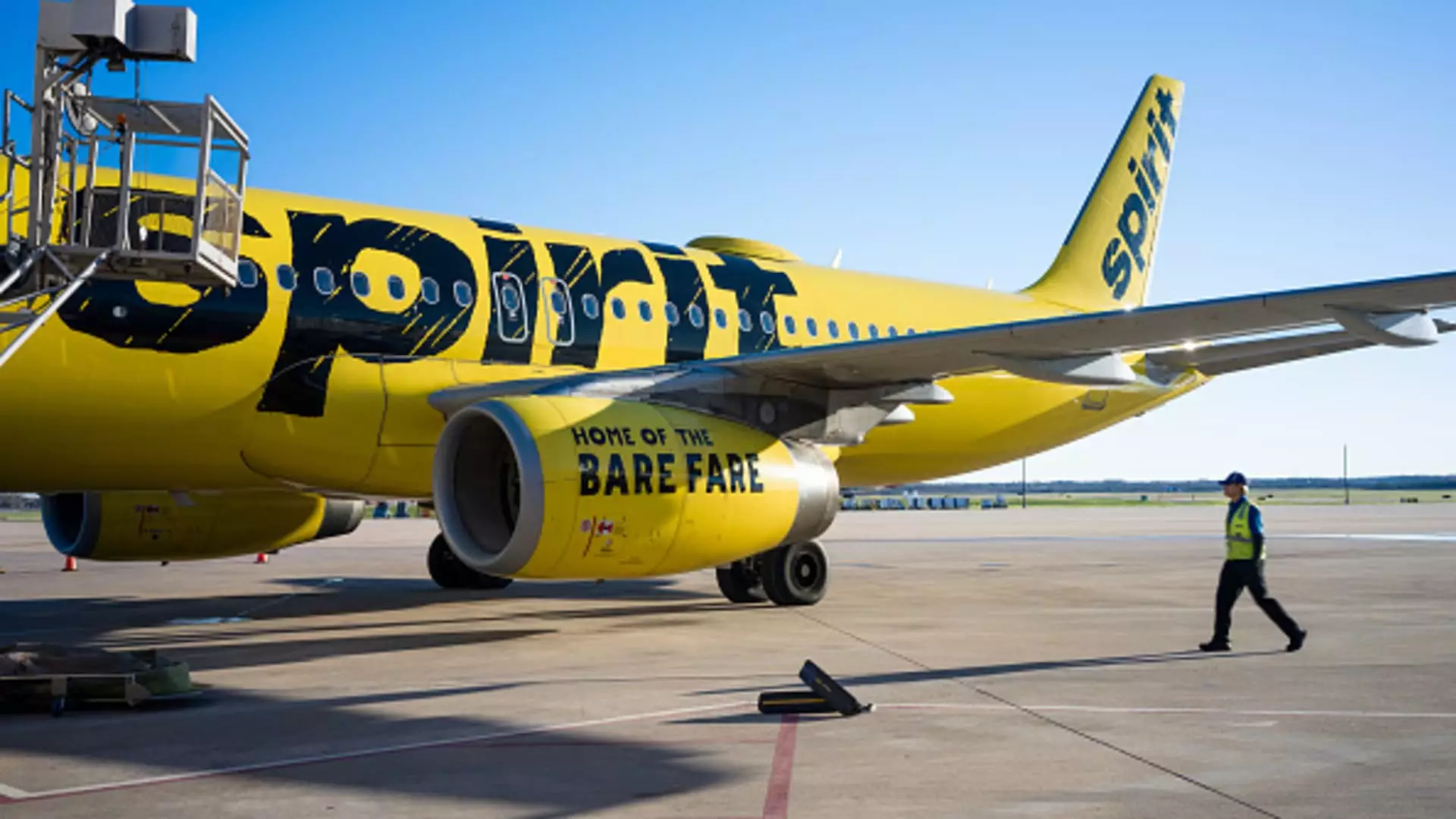On Friday, Spirit Airlines announced pivotal news regarding its financial position, revealing that it successfully negotiated an extension for its debt refinancing timeline to December. This decision was taken just hours before a looming deadline was set to expire, indicating the urgency of the situation the airline finds itself in. In a recent filing, Spirit also disclosed that it had fully drawn on its $300 million revolving credit facility, which is a reflection of its pressing liquidity needs. Despite this significant cash engagement, the airline forecasts that it will close the year with slightly over $1 billion in liquidity—a critical cushion as it navigates these financial waters.
The company also highlighted ongoing discussions with holders of its senior secured notes and convertible senior notes, with maturities due in 2025 and 2026, respectively. This reveals that while Spirit is maneuvering a precarious financial landscape, it is engaged in attempts to manage and restructure its debt obligations, indicating a possible longer-term recovery plan.
The market reacted unfavorably to the airline’s latest disclosures, as evidenced by a significant drop in its stock price. Spirit’s shares closed at a notably low point, valued at less than $1.50 per share, marking a decrease of approximately 3%. This poor performance is part of a broader trend, with the airline’s stock plummeting by over 90% this year alone. Notably, the past month has been particularly harsh, with stocks falling nearly 40%. Such alarming statistics underscore the pressing challenges faced by the airline, suggesting that investor confidence has waned significantly.
Spirit Airlines has been forced to implement drastic operational changes in an effort to curb costs and manage resources efficiently. The airline has furloughed multiple staff members, reduced flight schedules, and postponed aircraft deliveries, which are all critical measures aimed at preserving financial stability. These strategic pivots come as a result of exacerbating issues, including a notable engine recall impacting many of its aircraft manufactured by Pratt & Whitney. Such operational hindrances only deepen the complexity of Spirit’s already fragile situation.
Moreover, the recent cancellation of a proposed acquisition by JetBlue Airways has added another layer of difficulty. A federal judge’s ruling on antitrust grounds left the merger in shambles, disrupting Spirit’s plans to strengthen its position in the competitive airline industry. The loss of this potential deal indicates the external pressures hindering Spirit’s growth prospects.
Given the precarious financial standing and the multitude of operational challenges, speculation is rife that Spirit Airlines may be contemplating a bankruptcy filing, as suggested earlier this month by The Wall Street Journal. With the turbulence faced this year, the road to recovery appears fraught with uncertainty. Spirit’s aggressive maneuvers to extend its refinancing timeline and manage liquidity will be closely watched by industry analysts and investors alike. As it stands, the future of Spirit Airlines remains unclear, and the next few months will be crucial in determining where the airline is headed.


Leave a Reply